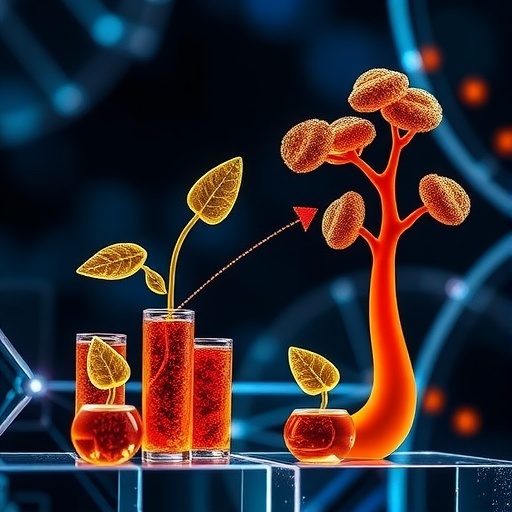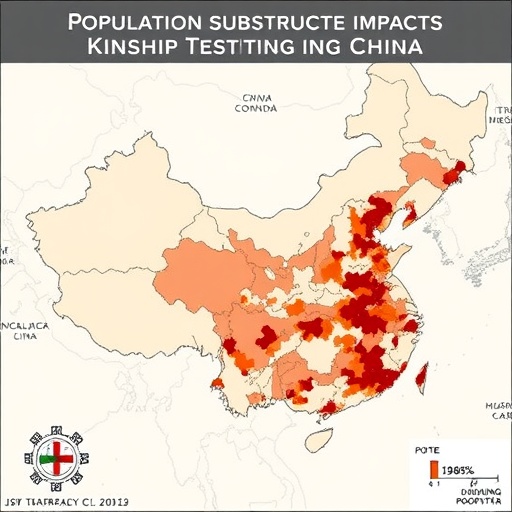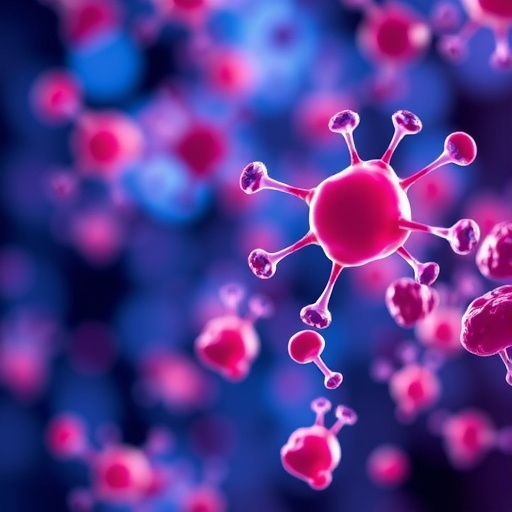PROTECT YOUR DNA WITH QUANTUM TECHNOLOGY
Orgo-Life the new way to the future Advertising by AdpathwayIn the relentless quest to conquer glioblastoma, one of the deadliest and most treatment-resistant brain cancers, cutting-edge research is revealing a remarkable cellular vulnerability: ferroptosis. This unique form of regulated cell death, driven by iron-dependent lipid peroxidation, is emerging as a potential Achilles’ heel within glioblastoma’s complex biology, offering a transformative avenue for therapeutic intervention. Unlike other malignancies, glioblastoma’s distinct metabolic dependencies and immune microenvironment fundamentally reshape how ferroptosis unfolds, spotlighting novel vulnerabilities that can be leveraged to overcome its notorious resistance to conventional therapies.
At the heart of glioblastoma’s ferroptotic landscape lies a striking divergence from cancers such as hepatocellular carcinoma. While in liver cancer, ferroptosis primarily hinges on disrupting the system Xc⁻ antiporter complex composed of SLC7A11 and SLC3A2, glioblastoma cells rely heavily on glutathione peroxidase 4 (GPX4) to survive oxidative stress. This is especially pronounced in glioblastoma stem-like cells (GSCs), identified by the CD133 marker, which demonstrate extraordinary sensitivity to GPX4 inhibition. This dependency creates a therapeutic window, as differentiated glioblastoma cells—lacking this stemness quality—show far greater resilience to ferroptosis induction. Notably, this hierarchical sensitivity pattern is absent in KRAS-driven pancreatic and lung cancers, where ferroptosis susceptibility is more uniformly dictated by SLC7A11 suppression and heightened reactive oxygen species (ROS) levels.
Glioblastoma’s iron metabolism is intricately reprogrammed in ways that predispose it to ferroptotic death, setting it apart from many extracranial tumors. Tumor cells and stem-like populations achieve this by simultaneously upregulating transferrin receptor (TFRC) to enhance iron uptake while downregulating ferritin heavy chain 1 (FTH1), the intracellular iron storage protein, thereby increasing the pool of labile iron. This strategic manipulation heightens basal ferroptotic vulnerability, eliminating the need for external iron supplementation that breast and colorectal cancers often require to sensitize cells to ferroptosis-inducing agents like erastin or RSL3. The intrinsic iron priming within glioblastoma offers two-fold therapeutic advantages: it amplifies susceptibility to ferroptosis triggers and permits effective dosing at substantially reduced levels, mitigating systemic toxicity risks.
Another architectural layer influencing ferroptosis in glioblastoma revolves around the tumor’s unique hypoxic environment, particularly within peri-necrotic zones. Hypoxia-inducible factor 1 alpha (HIF-1α) activity in these regions suppresses lipid desaturase enzymes such as stearoyl-CoA desaturase-1 (SCD1), which otherwise generate monounsaturated fatty acids conferring lipid membrane resilience. By reducing SCD1 activity, HIF-1α fosters accumulation of polyunsaturated fatty acids (PUFAs), which serve as prime substrates for acyl-CoA synthetase long-chain family member 4 (ACSL4)-catalyzed lipid peroxidation, precipitating ferroptosis. Intriguingly, this mechanism contrasts with hypoxia-related responses in renal or prostate cancers, where HIF-1α upregulates ferroptosis suppressors like SLC7A11 or ferroptosis suppressor protein 1 (FSP1), highlighting glioblastoma’s unique lipid metabolic rewiring as a ferroptosis-amplifying factor.
Ferroptosis’ interplay with glioblastoma’s highly immunosuppressive microenvironment adds another layer of complexity and opportunity. Unlike melanoma, where ferroptotic tumor cells release damage-associated molecular patterns (DAMPs) that engage dendritic cells (DCs) and boost responses to immune checkpoint inhibitors, glioblastoma’s restricted immune milieu dampens this phenomenon. Instead, ferroptosis in glioblastoma prominently reprograms tumor-associated macrophages (TAMs), skewing their phenotype towards the pro-inflammatory, tumoricidal M1-like state via lipid peroxidation byproducts such as 4-hydroxynonenal (4-HNE) and oxidized phosphatidylethanolamines. These lipid derivatives uniquely enhance the expression of interleukin-12 (IL-12) and tumor necrosis factor-alpha (TNF-α) in glioblastoma-infiltrating macrophages, a response absent in hepatoma or colorectal cancer models. This immunomodulatory facet presents a promising angle to amplify ferroptosis-driven anti-tumor immunity, even in the notoriously “cold” glioblastoma ecosystem.
Therapeutic resistance in glioblastoma is notoriously multifaceted, but ferroptosis unveils specific vulnerabilities within these resistant mechanisms. A quintessential example is the upregulated Nrf2 antioxidant pathway mediated via constitutive activation of its negative regulator Keap1. Contrary to lung adenocarcinoma—where Keap1 mutations predominately foster ROS resistance—in glioblastoma, this pathway drives a dual regulatory axis, simultaneously enhancing redox buffering capacity while promoting DNA repair. Notably, Nrf2 activation upregulates O6-methylguanine-DNA methyltransferase (MGMT), a key player in DNA alkylation repair that also confers profound resistance to temozolomide (TMZ), the frontline chemotherapy for glioblastoma. This intricate crosstalk between redox homeostasis and DNA repair under the control of Nrf2 and Keap1 is unique to glioblastoma biology, underscoring a novel molecular vulnerability ripe for targeted disruption.
Moreover, ferroptosis functions as a critical compensatory death modality in glioblastoma cells that have acquired resistance to TMZ. These resistant clones exhibit heightened expression of lipid ROS-detoxifying enzymes including GPX4 and FSP1, which together attenuate the efficacy of lipid peroxidation-mediated cell death. Strikingly, experimental knockdown of GPX4 not only resensitizes these resistant cells to ferroptosis but also restores TMZ sensitivity. This dual reversal indicates that ferroptosis induction may synergize with TMZ to overcome therapeutic resistance, signaling a potential paradigm shift where ferroptosis-targeting agents are integrated into current glioblastoma treatment regimens to enhance efficacy and delay relapse.
Collectively, these findings signify that glioblastoma’s ferroptosis phenotype is shaped by a sophisticated network of metabolic, oxidative, lipidomic, and immunologic factors distinct from those of other solid tumors. This distinctiveness is not merely academic; it provides a strategic blueprint for developing glioblastoma-specific ferroptosis therapies optimized to exploit its unique vulnerabilities. For example, lower-dose ferroptosis inducers that capitalize on elevated labile iron pools within GSCs could maximize antitumor activity while minimizing collateral toxicity. Concurrently, therapies aiming to modulate the glioblastoma immune microenvironment by harnessing ferroptosis-driven macrophage polarization might transform the immunologically inert tumor bed into one primed for immune elimination.
The path forward is clear: integrating ferroptosis-targeted strategies into the glioblastoma treatment arsenal could disrupt the deadly cycle of therapy resistance and tumor recurrence that has long stymied progress. However, clinical translation demands sophisticated delivery systems capable of achieving efficient GPX4 or SLC7A11 inhibition within the central nervous system, coupled with robust biomarkers for patient stratification and treatment monitoring. Translational research focused on dissecting glioblastoma’s heterogeneous metabolic and immunologic subpopulations will be pivotal to identify responders and tailor precise ferroptosis-modulating regimens.
As this emerging paradigm gains momentum, expert collaboration across neurology, oncology, immunology, and medicinal chemistry will be essential to convert ferroptosis from a molecular insight into a clinically impactful weapon against glioblastoma. The stakes could not be higher: given glioblastoma’s dismal prognosis and limited treatment options, ferroptosis-centric therapeutic designs harbor the transformative potential to enhance survival and quality of life for patients devastated by this formidable malignancy. The coming years are poised to witness an exciting revolution where the ferroptotic vulnerability of glioblastoma morphs from biological curiosity into a cornerstone of effective, next-generation brain cancer therapy.
Subject of Research: Ferroptosis mechanisms and therapeutic vulnerabilities in glioblastoma.
Article Title: Harnessing ferroptosis to transform glioblastoma therapy and surmount treatment resistance.
Article References:
Singh, S., Mohapatra, I., Barik, D. et al. Harnessing ferroptosis to transform glioblastoma therapy and surmount treatment resistance. Cell Death Discov. 11, 448 (2025). https://doi.org/10.1038/s41420-025-02744-x
Image Credits: AI Generated
DOI: https://doi.org/10.1038/s41420-025-02744-x
Tags: differences in ferroptosis across cancersferroptosis in glioblastomaglioblastoma stem-like cells vulnerabilitiesglutathione peroxidase 4 role in glioblastomaimmunology of glioblastoma microenvironmentiron-dependent cell death mechanismsmetabolic dependencies in glioblastomanovel cancer treatment approachesovercoming glioblastoma resistanceregulated cell death in cancertargeting oxidative stress in glioblastomatherapeutic strategies for glioblastoma


 4 hours ago
6
4 hours ago
6





















 English (US) ·
English (US) ·  French (CA) ·
French (CA) ·